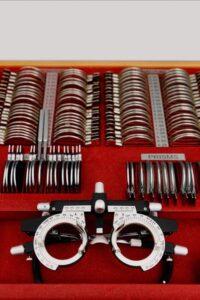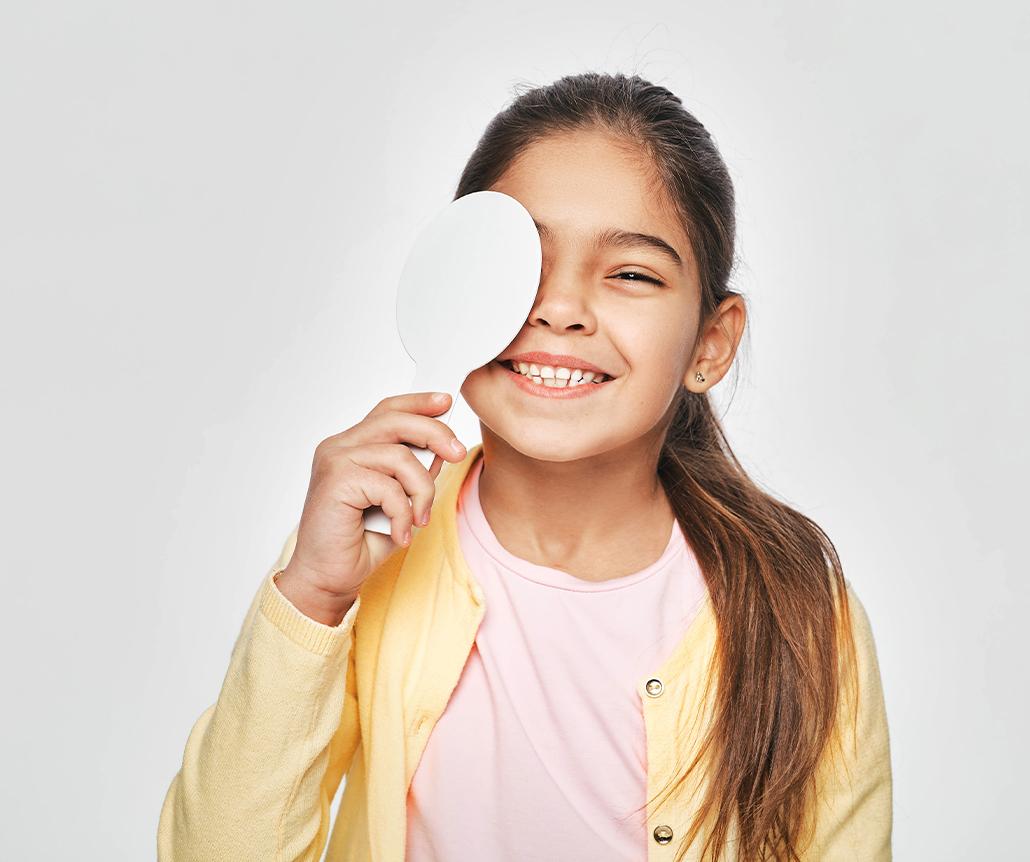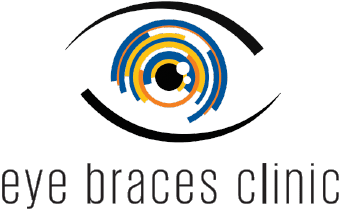CHILDREN MYOPIA CONTROL PROGRAM | CHILDHOOD MYOPIA MANAGEMENT
Nearsightedness, often known as myopia, is a common vision problem that is usually detected before the age of 20.
Myopia develops when the eyeball is too long, or the cornea is overly curved. As a result, light that enters the eye is not properly focused, and distant objects appear blurry.
This condition is easily corrected with visual aids such as glasses, but developing myopia in children tends to worsen, and high myopia levels are associated with an increased risk of eye disease in adulthood.
It’s essential to detect and manage myopia early as it can lead to severe eye health problems in later life, such as glaucoma, cataracts, retinal detachment, and myopic macular degeneration.
As pioneers in early-age vision correction, we empower your little ones to explore the world with crystal clear vision, aiding their development and enriching their experiences.
Don’t let blurry vision stand in the way of their potential.
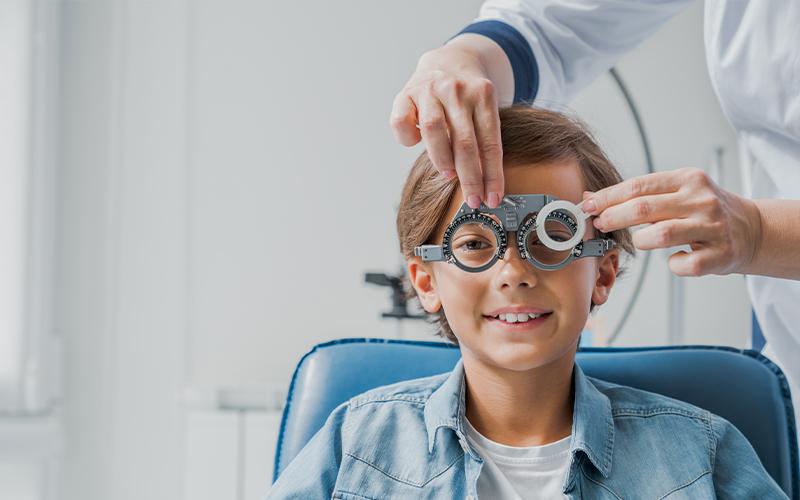
WHAT IS CHILDHOOD MYOPIA?
Childhood myopia is a type of blurred distance vision (short-sightedness) that develops during a child’s growing years and worsens over time.
This refractive error is extremely common in Singapore. According to surveys, one in every four 7-year-olds, one-third of 9-year-olds, and half of 12-year-olds suffer from myopia.
To address this, prescription glasses or contact lenses, atropine eye drops, and certain types of specially designed contact lenses (such as dual-focus contact lenses and Ortho K lenses) can slow myopia progression.
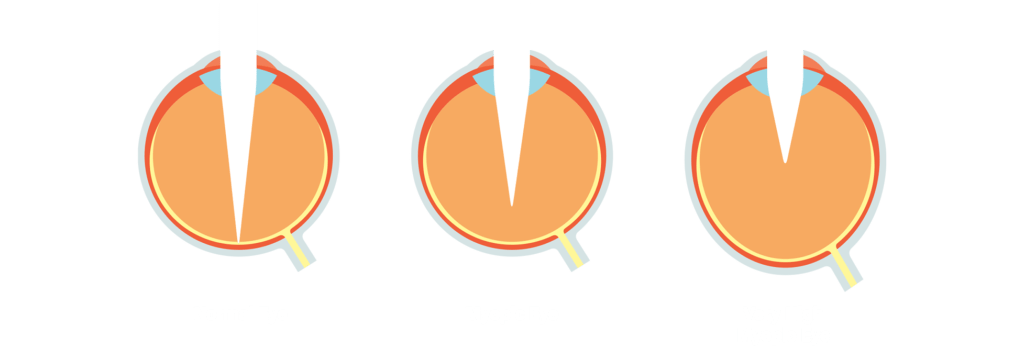
CAUSES OF CHILDHOOD MYOPIA
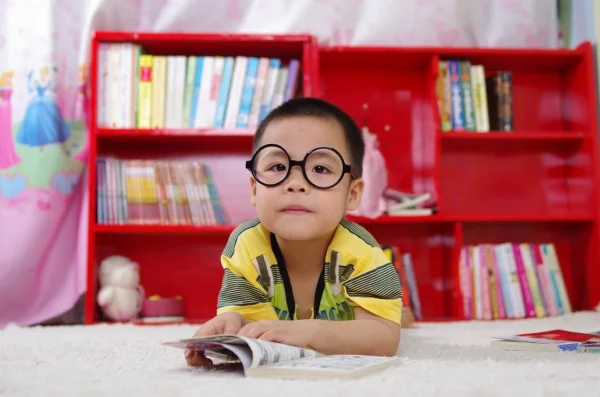
Evidence suggests that a combination of genetic and environmental factors contribute to childhood myopia progression. Children of myopic parents are more likely to develop myopia too.
There is also a rare progressive type of myopia called degenerative myopia, usually inherited from parents. The child’s eyeball gets longer very quickly and causes severe myopia, usually by the teenage or early adult years. This type of myopia can worsen far into adulthood.
Moreover, according to a study by the Singapore Eye Research Institute, childhood myopia is largely attributed to frequent near-work activities done with digital screens.
CHILDHOOD MYOPIA SYMPTOMS
School-going kids may complain about being unable to see the whiteboard at school or the bus number from afar.
Other indications of childhood myopia include:
Squinting while working on homework, reading or watching television
Constant rubbing of the eyes
Fatigue
Constant Blinking
Poor academic performance
Reduced attention span
Bringing objects up to one’s face
Although the majority of myopia cases are mild and can be easily controlled with corrective lenses, more severe disorders could develop if no action is taken.
.
HOW TO MANAGE CHILDHOOD MYOPIA
Eyeglasses
Most people with myopia prefer to wear glasses to correct their refractive errors. A single-vision lens is prescribed to provide clear vision at all distances.
Contact Lenses
Contact lenses provide clearer vision and a wider field of view than eyeglasses for some people. However, because contact lenses are worn directly on the eyes, they must be cared for properly to protect eye health.
Ortho K
Orthokeratology (Ortho-K), also known as corneal refractive therapy, is another option for correcting and managing myopia. In this nonsurgical procedure, you wear a series of rigid contact lenses to gradually reshape your cornea.
Laser Eye Surgery
Adults with myopia may benefit from refractive surgery procedures such as LASIK (laser in situ keratomileusis) or PRK (photorefractive keratectomy). By removing a small amount of corneal tissue, a laser beam of light reshapes the cornea to correct any blurred vision.
Parents can encourage children to practice good eye care habits to prevent childhood myopia from worsening. Make sure your child takes frequent breaks to rest his or her eyes when participating in activities that strain the eyes.
Setting limits on activities that cause eye strain for your children (and yourself) is especially important.
Unlock a brighter future for your child with our proven childhood myopia correction solutions
MYOPIA CONTROL PROGRAMME

Step 1
Eye Examination

Step 2
Personalised Consultation
Based on your eye assessment results, we will recommend and discuss suitable courses of action with you and your child.

Step 3
Programme Implementation
Once you have decided, we will prepare the programme accordingly and provide thorough education and guidance on the entire process.
CHILDHOOD MYOPIA FAQs
The corneal molds are key to ensuring healthy corneas while enabling myopia retardation. Not every optometrist is able to prescribe and fit specialty contact lenses. Therefore, it is that crucial to go to the right optometrist who is able to design and customise the perfect fit to prevent risks of infection or discomfort.
Our optometrists at Eye Braces Clinic are trained and certified to provide a range of myopia control programmes, including specialty contact lens, to help you find the best solution for your budget and needs.
Myopia develops and progresses throughout childhood and early adolescence, and usually stabilises when one enters adulthood. This means that the younger the child develops myopia, the higher the risks of it progressing into high myopia before it stabilises.
Hence, it is advisable to detect and control myopia as early as possible since its effects are irreversible.
CONTROL YOUR CHILD'S MYOPIA WITH EYE BRACES CLINIC
Depending on the severity of myopia, Eye Braces Clinic will provide you with the most suitable myopia control programmes.
Our experienced optometrists at Eye Braces Clinic are trained and certified to provide the best eye care options for you and your child.
Protect your child’s vision and book a consultation with Eye Braces Clinic today!
